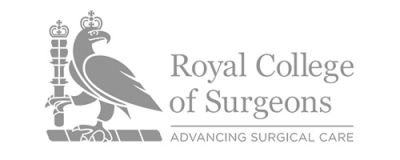REVISION KNEE REPLACEMENT
Total Knee Replacement (TKR) is a very successful treatment for end-stage degeneration of the knee joint; almost 60,000 TKRs are performed in the UK each year.
Despite technological advances and our increased understanding of knee replacement surgery, between 5-10% of knee replacements will fail and require revision within 10 years.
CAUSES OF TKR FAILURE
The most common cause of knee replacement failure is aseptic loosening due to implant wear, although other factors such as infection, trauma and metal sensitivity can all result in the need for revision surgery.
REVISION KNEE REPLACEMENT SURGERY
Revision knee replacement surgery involves an inpatient stay of 7-10 days. The surgery is complicated, technically demanding and whilst the risks are the same as for primary TKR, the rate of complication is much higher. It should be undertaken by surgeons who have an interest in and are specialised in revision knee surgery.
Revision knee replacements are performed under a combined (spinal and general) anaesthetic. The old knee replacement is removed with great care in order to protect the surrounding bone. Often there has been significant bone loss as a result of aseptic loosening; a bone graft or additional prosthetic implants may be necessary to allow the revision knee replacement to be properly aligned and stable. Revision knee replacements usually need an extension (called a ‘stem’) in the femur and tibia so that there is adequate support.
At the end of the operation a drain is inserted into the knee joint to draw off excess blood. A dressing is applied to the wound and the knee will be wrapped in a crepe bandage. Foot pumps, elastic stockings and occasionally an injection to thin the blood are used to lower the risk of blood clots forming in the legs.
No two revisions are the same; possible difficulties encountered are bone loss, ligament insufficiency, infection and stiffness. Highly specialised implants may be necessary and the results are not as good as for standard primary knee replacement. However, the majority of patients are very satisfied with the results of revision surgery and obtain very good relief of pain and return to function.
POSTOPERATIVE RECOVERY AND REHABILITATION
The postoperative recovery from revision knee surgery is similar to that of primary knee replacement but occasionally a brace is needed for the first few weeks in order to protect the soft tissues while they heal. Physiotherapy is essential to assist patients in mobilising after the operation.
Discussion with Nadim is important to answer any questions that you may have. For information about any additional conditions not featured within the site, please contact us for more information.









